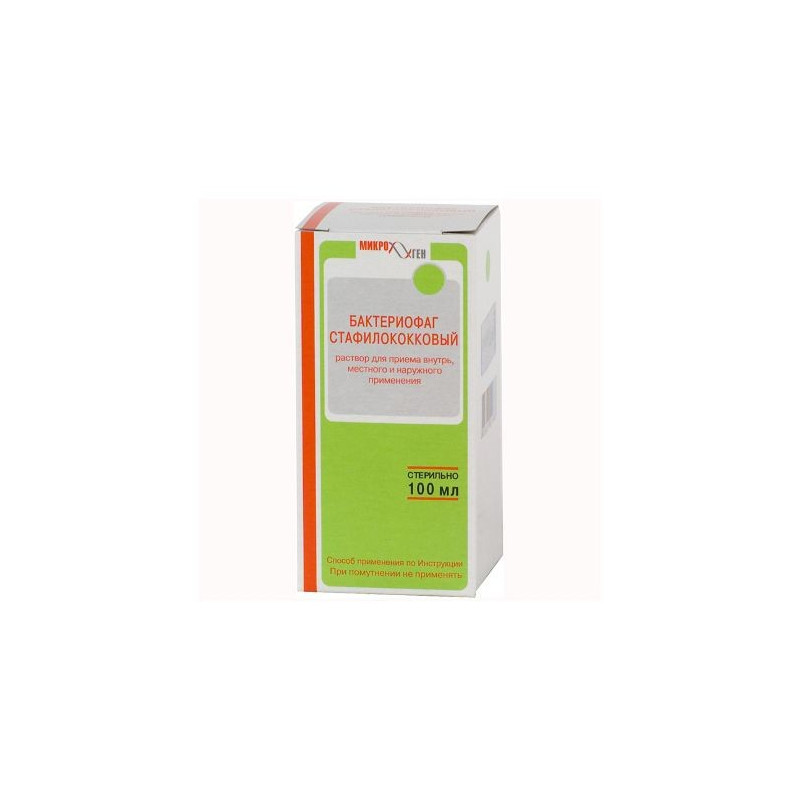



 All payments are encrypted via SSL
All payments are encrypted via SSL
 Full Refund if you haven't received your order
Full Refund if you haven't received your order
Solution
The drug is a filtrate of phagolysate, active against staphylococcal bacteria of the most common phage types, including Staphylococcus aureus.
Fl. 100 ml.
Staphylococcal bacteriophage - immunobiological preparation, phage.
Staphylococcal bacteriophage has the ability to specifically lyse staphylococcal bacteria isolated from purulent infections, including Staphylococcus aureus.
Staphylococcus bacteriophage is used to treat and prevent purulent infections of the skin, mucous membranes, visceral organs caused by staphylococcal bacteria, as well as in dysbacteriosis:
There are no contraindications to the use of staphylococcal bacteriophage.
The main conditions for the use of bacteriophage is the early use of the drug that meets the etiology of the disease, its direct introduction into the site of infection.
Depending on the nature of the source of infection, bacteriophage is used:
1.) Locally in the form of irrigation, lotions and plugging with liquid phage in an amount up to 200 ml, depending on the size of the affected area, or smearing with ointment.
With boils and carbuncles, a liquid preparation can be injected directly into the nidus or under the base of the infiltrate, as well as around the nidus by chipping. Bacteriophage injections are performed daily or every other day, depending on the reaction in successively increasing doses: for 1 injection, 0.5 ml, then 1.0; 1.5; 2.0 ml. A total of 3-5 injections per treatment cycle.
In case of bacteriophage abscesses, it is introduced into the cavity of the lesion after the pus is removed by puncture, the amount of the injected drug should be slightly less than the volume of the removed pus. Pus can be removed by opening an abscess with the subsequent introduction of a tampon abundantly moistened with bacteriophage into the cavity.
In chronic osteomyelitis, after appropriate surgical treatment, a staphylococcal bacteriophage is infused into the wound.
2.) For the treatment of deep forms of pyodermatitis, the drug is used intracutaneously in small doses of 0.1 - 0.5 ml in one place or, if necessary, up to 2 ml in several places. Only 10 injections every 24 hours.
3.) Introduction to the abdominal, pleural, articular and other cavities up to 100 ml of bacteriophage, after which the cavity is tightly sutured or capillary drainage is left, through which the bacteriophage is reintroduced within a few days. With cystitis, bacteriophage is injected into the bladder through a catheter.
For purulent pleurisy, bursitis or arthritis, the bacteriophage is injected into the cavity (after removing pus) in an amount of up to 200 ml or more, every other day, only 3-4 times.
4.) For intestinal forms of the disease caused by staphylococcus and dysbacteriosis, liquid bacteriophage is used per os and per rectum using an enema or by administering rectal suppositories. Per os bacteriophage is given 2 times a day on an empty stomach 1.5-2 hours before a meal and per rectum once a day.
Reactions to the introduction of staphylococcal bacteriophage have not been established.
With intradermal administration, there may be rapidly passing reversible redness and inflammation.
In the dark place at a temperature of no higher than 2-8 ° C.
